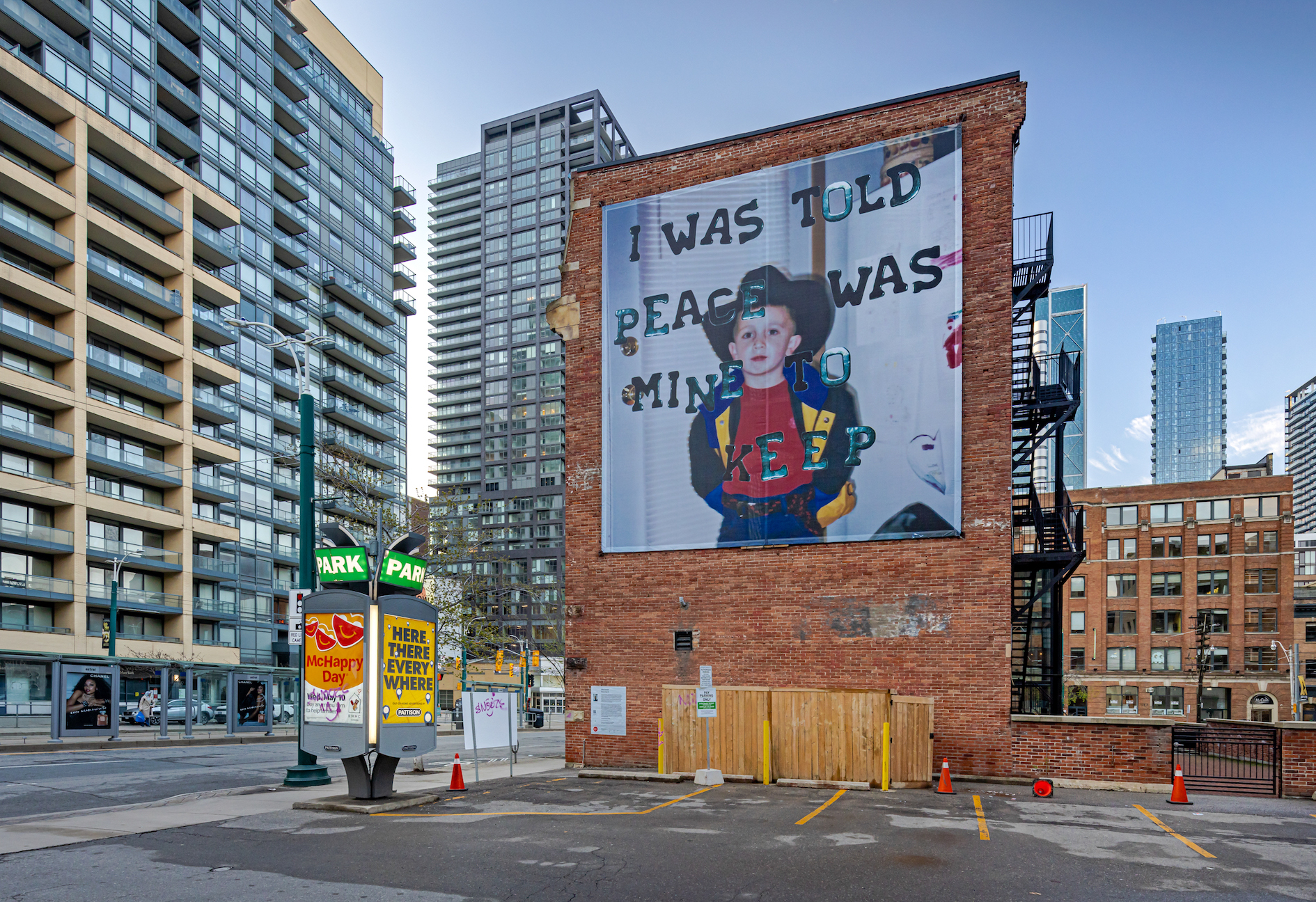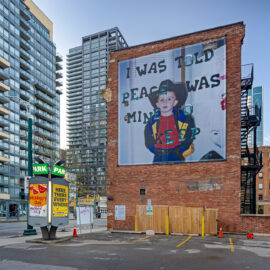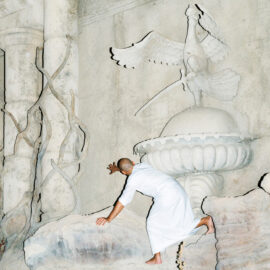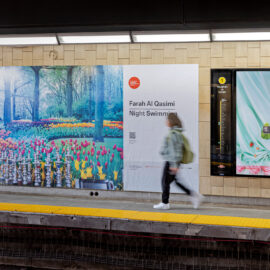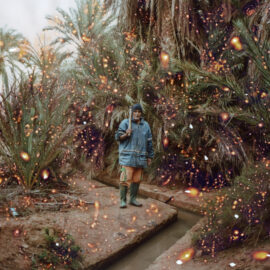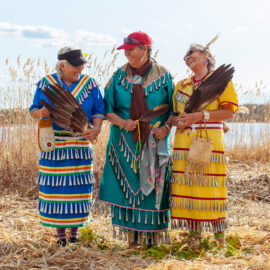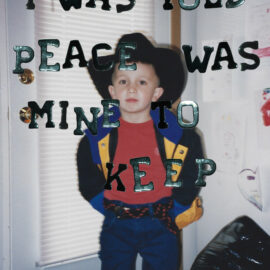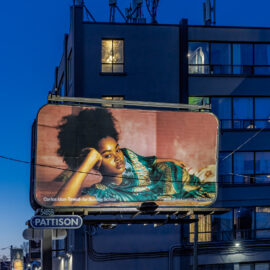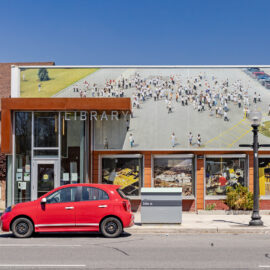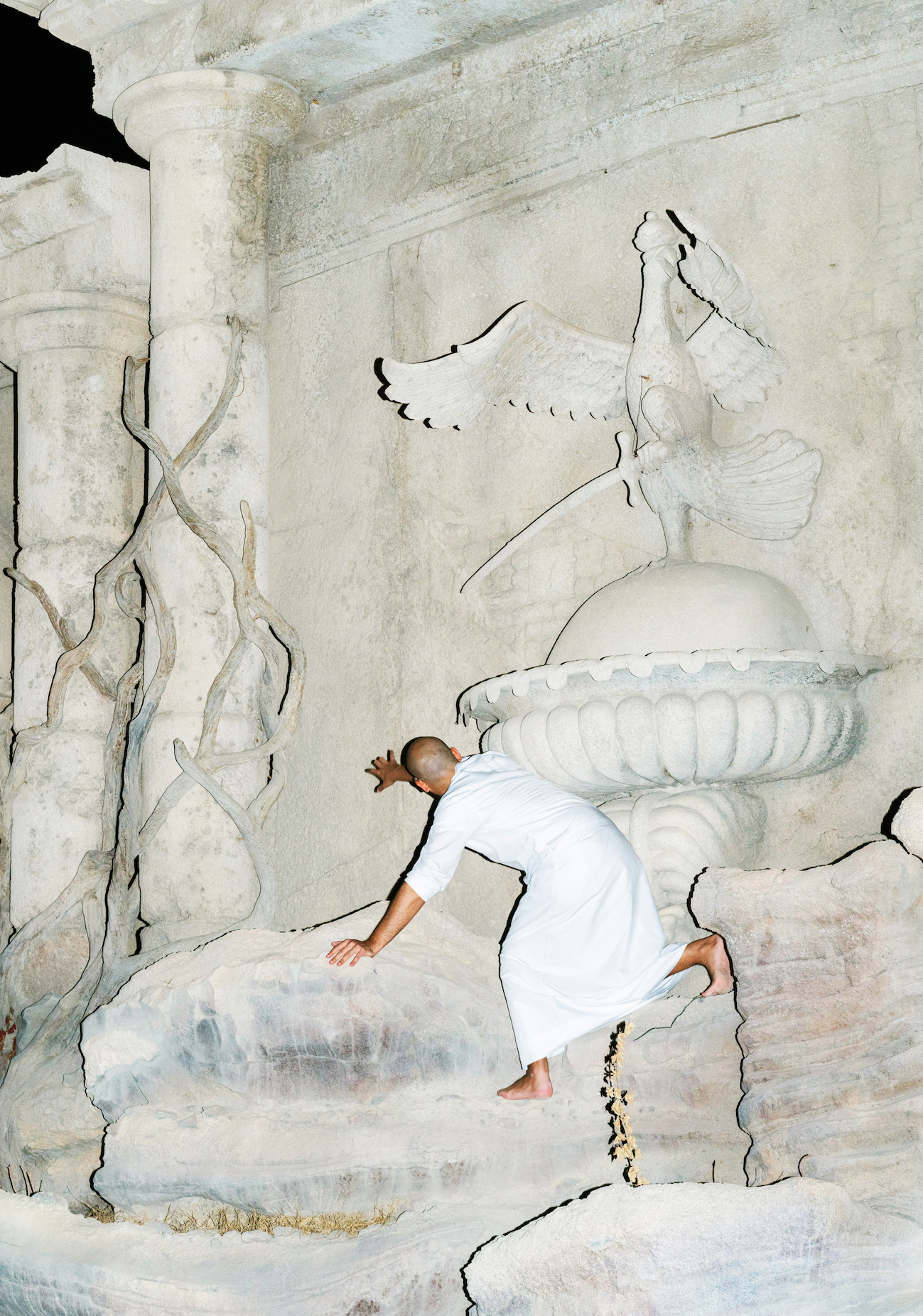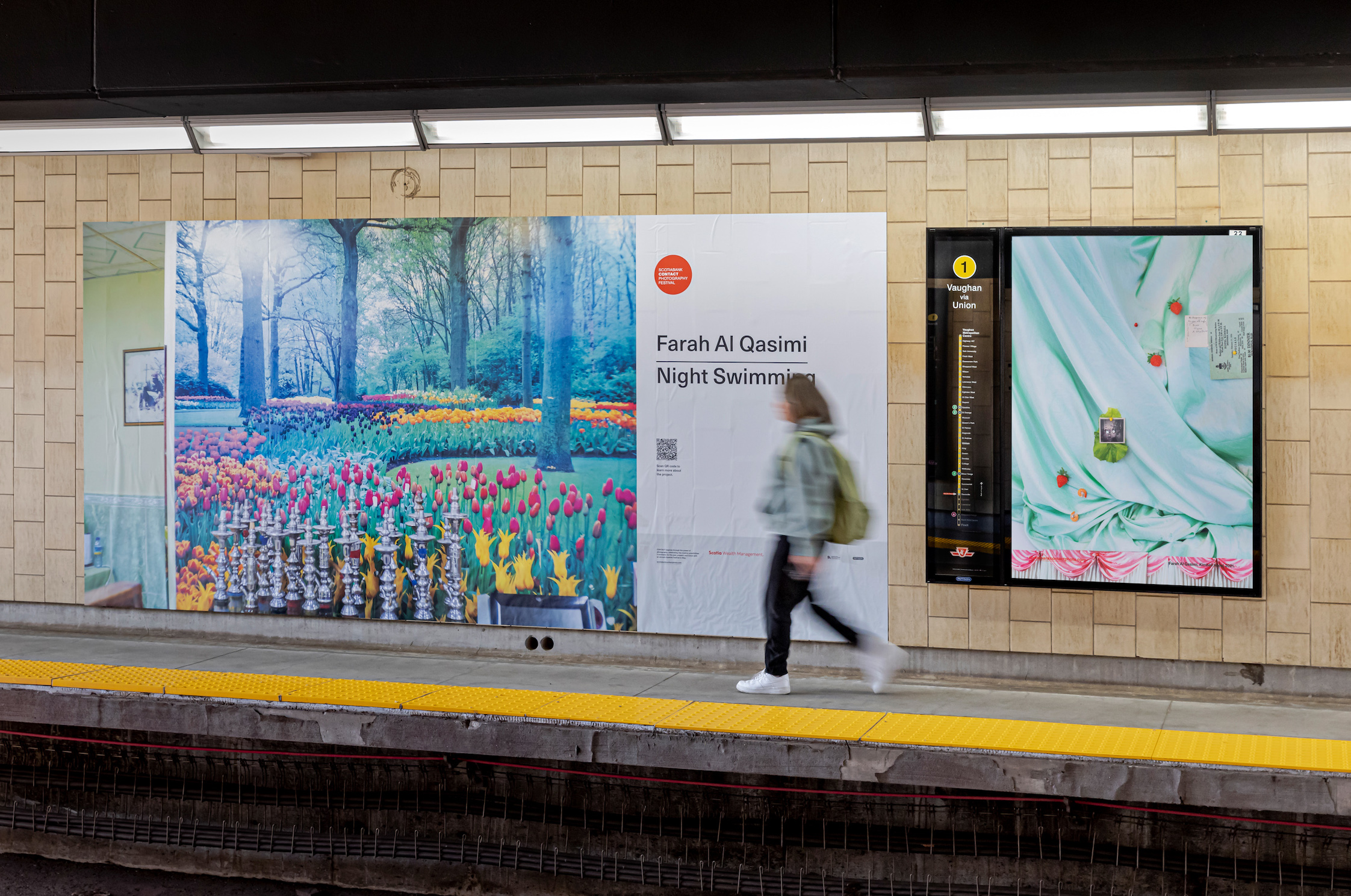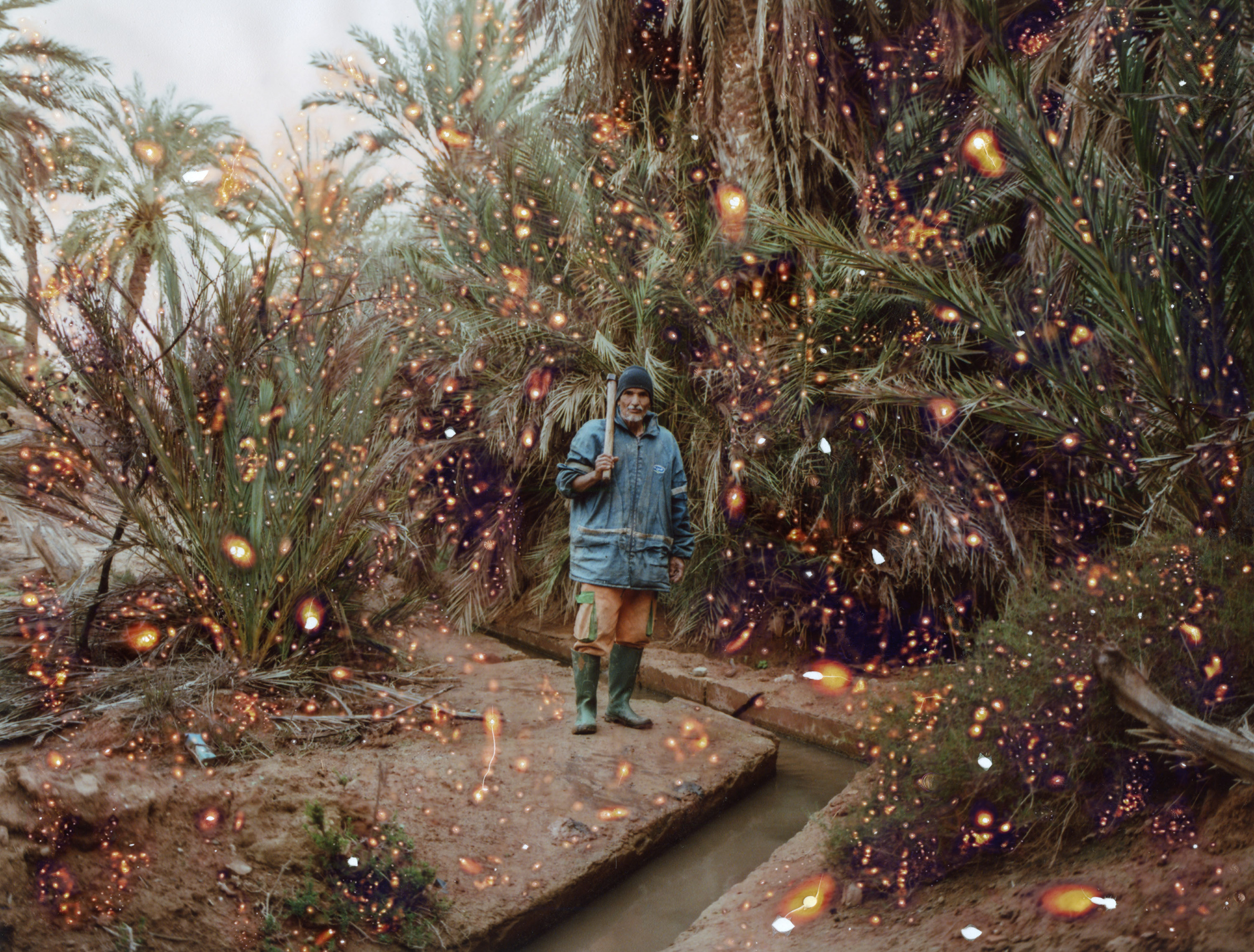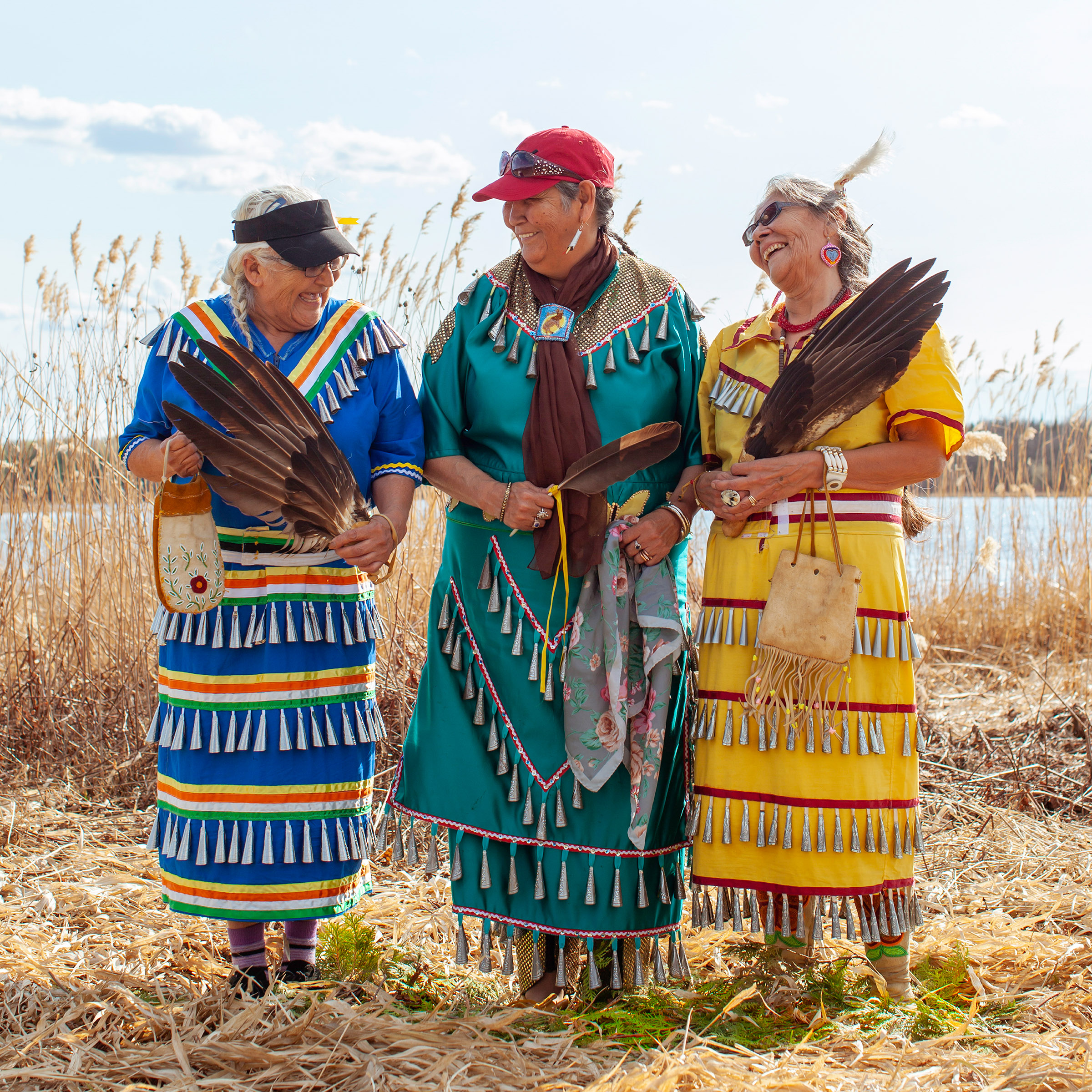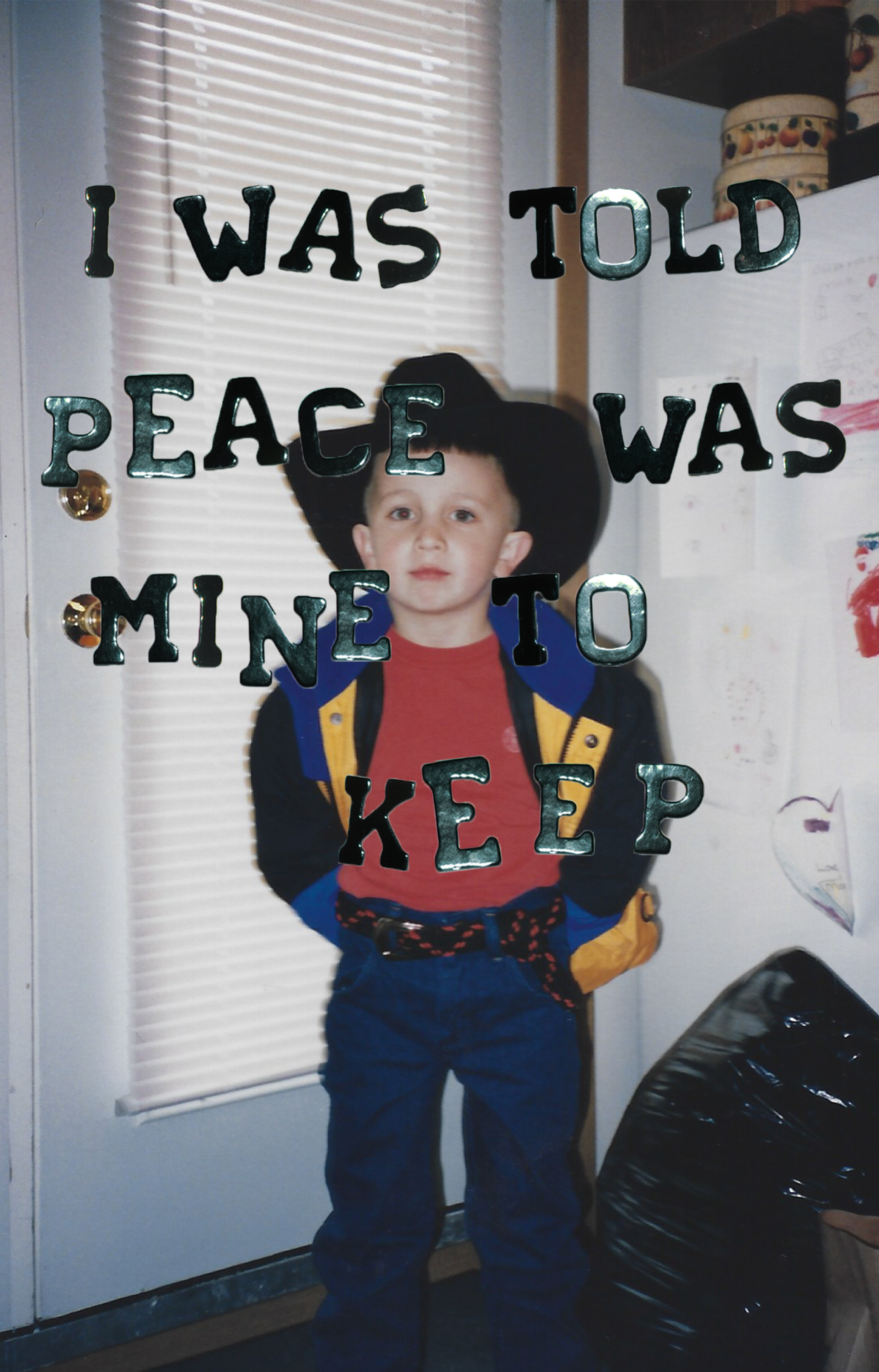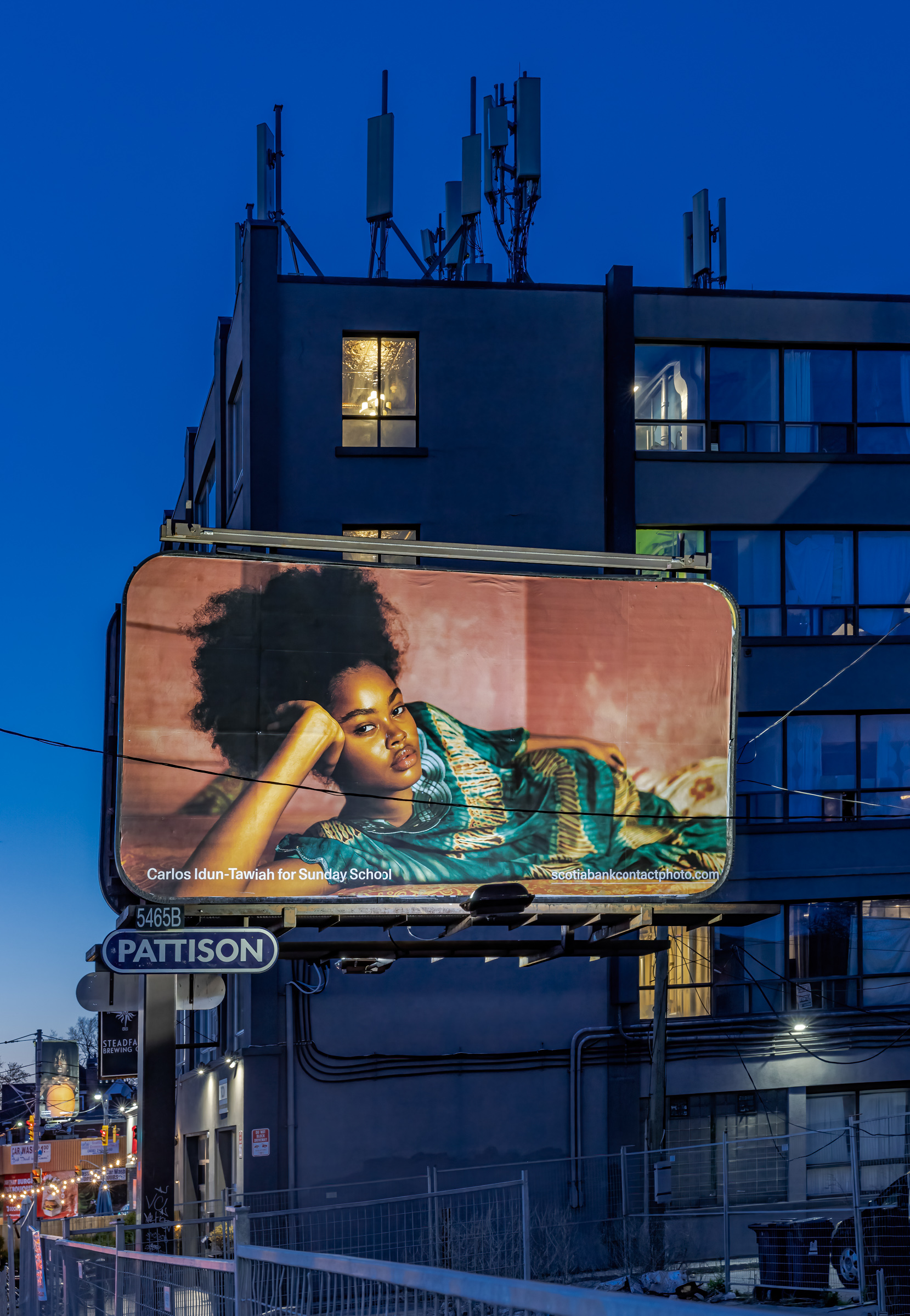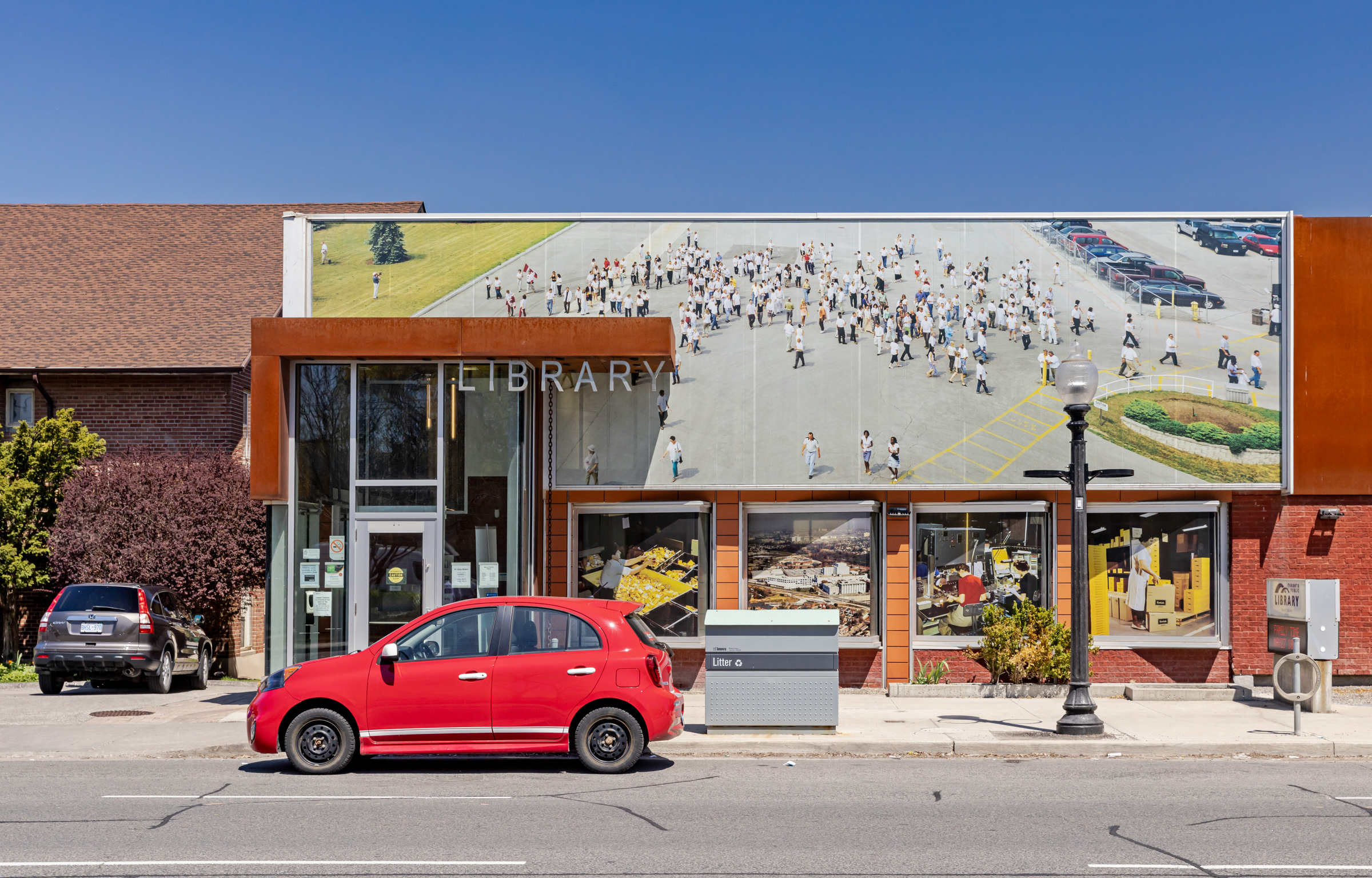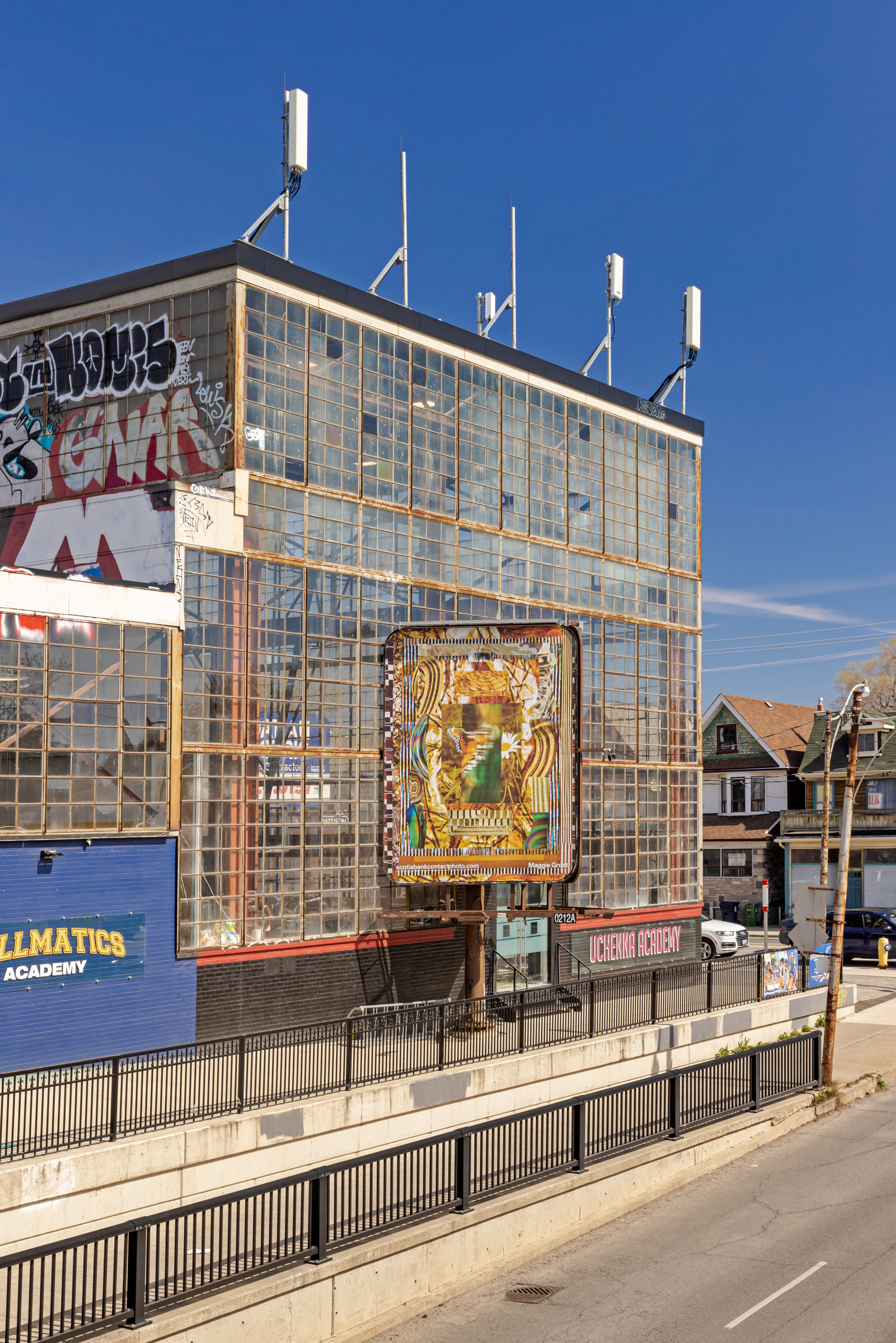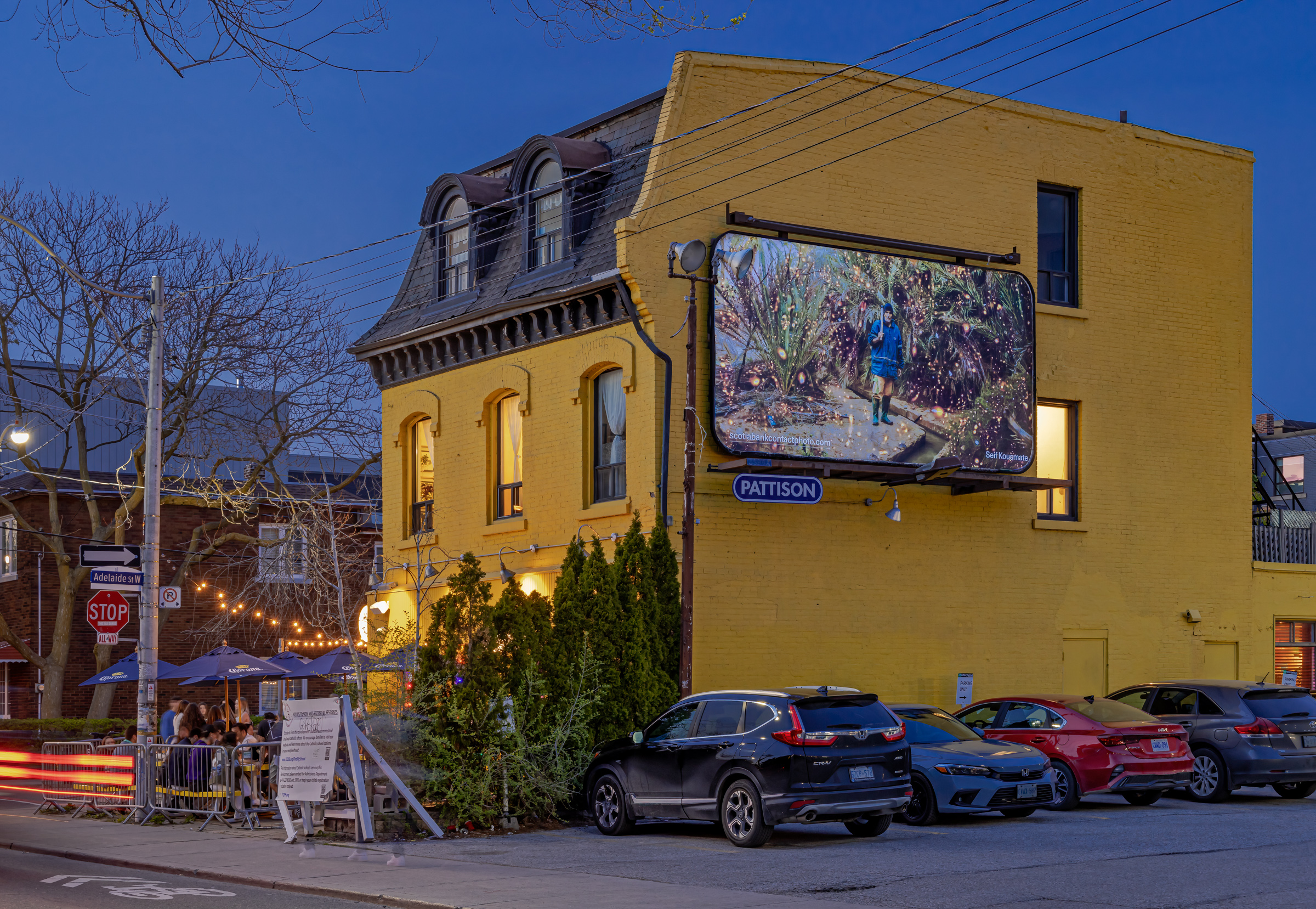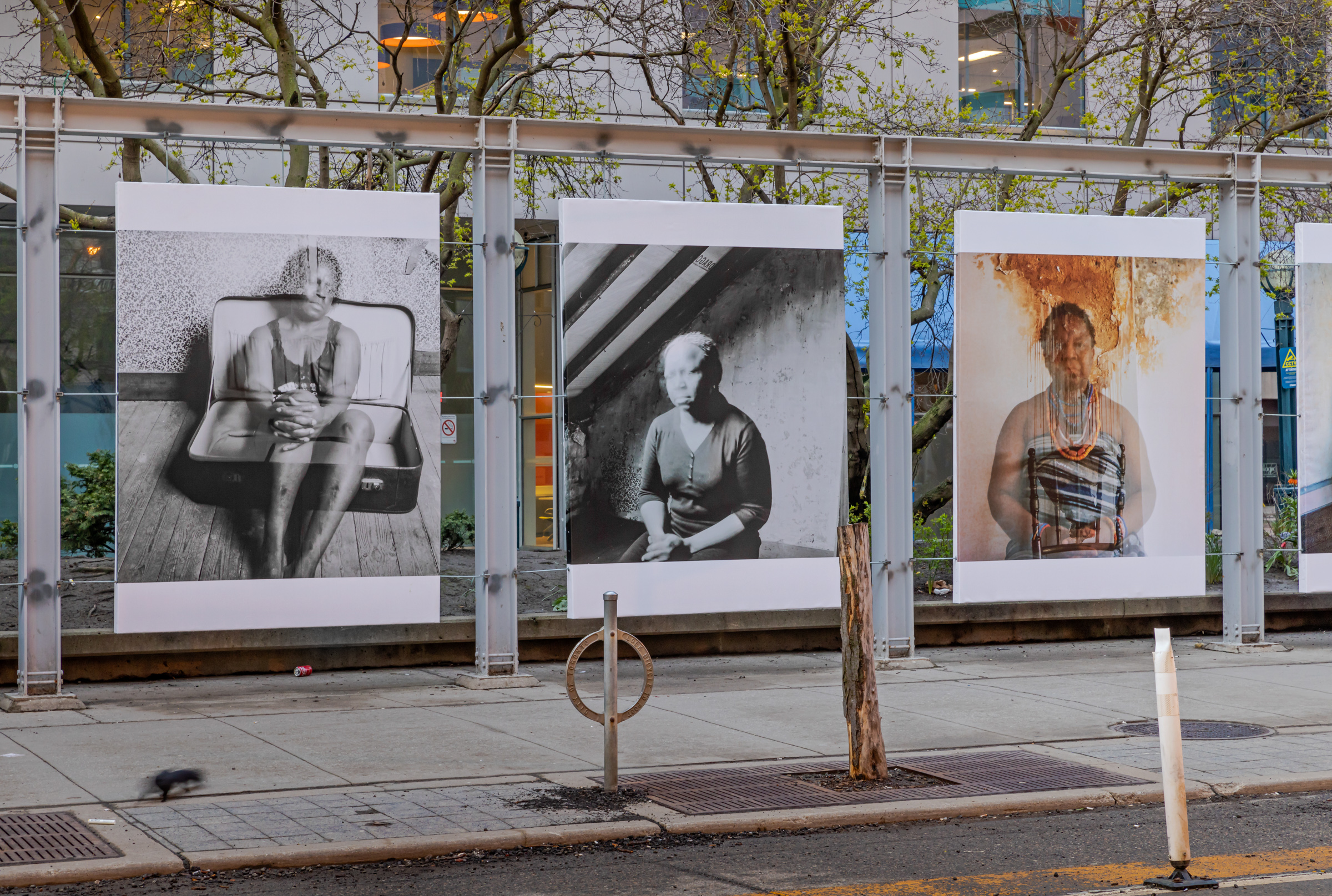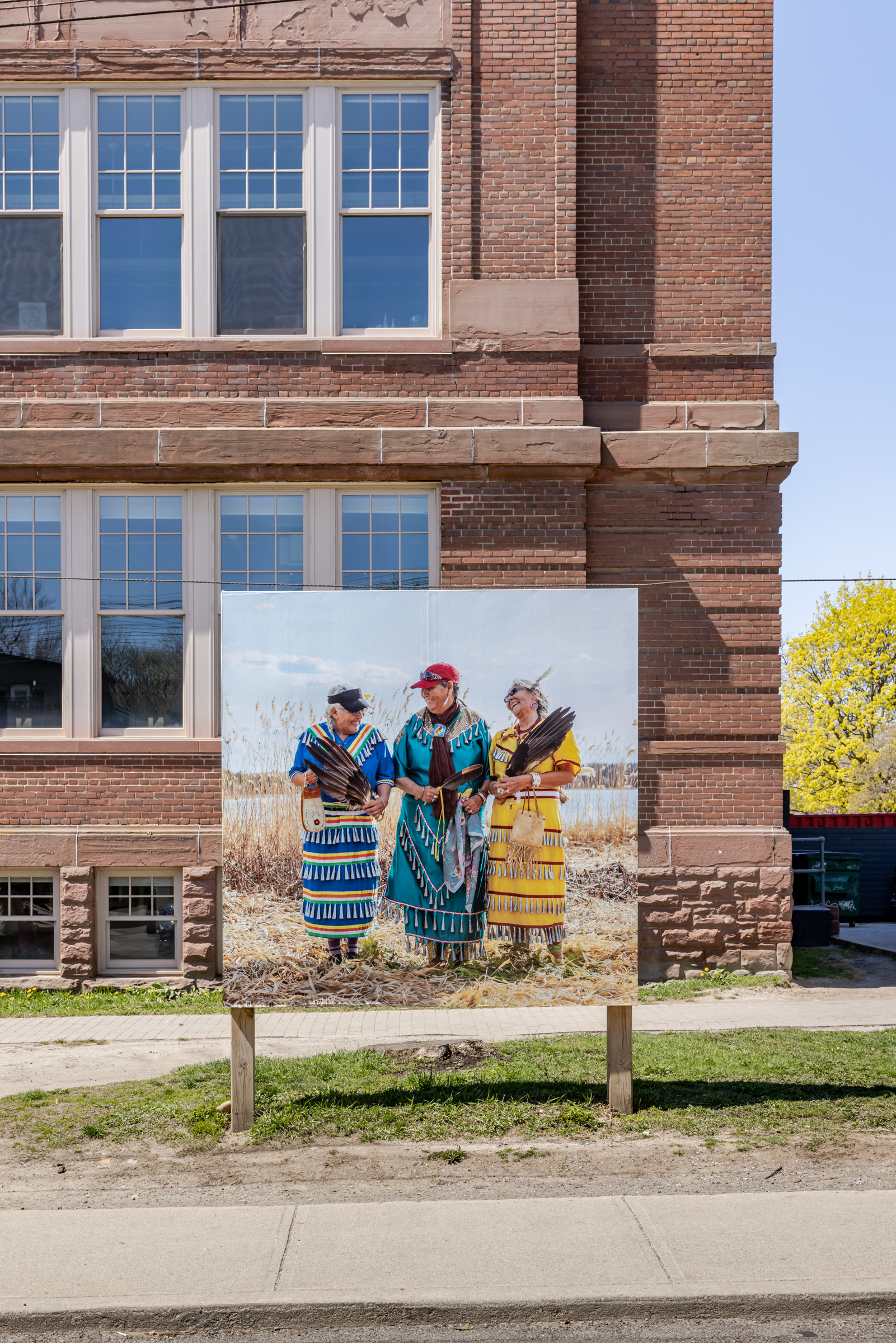Just outside an old public school, semi-recently renovated into the arts institution Artscape Youngplace, stands a billboard more modest in size compared to others featured in this year’s Outdoor programming. Hovering just above eye level is a single image from Nadya Kwandibens, Toronto’s newly-appointed Photo Laureate, curated by Ariel Smith as part of Critical Distance’s Materialized series, co-presented with Native Women in the Arts, CONTACT, and Partners in Art.
Kwandibens’ billboard features an outtake from a 2019 series shot in her homeland of Kenora, Ontario, Treaty 3 Territory: Shiibaashka’igan: Honouring the Sacred Jingle Dress (21 April – 3 June), photographed at the Naotkamegwanning roundhouse. In the candid and joy-filled image, three Anishinaabekwewag laugh with each other, their jingle dresses, eagle fans, and other regalia paired with sensible accessories like sunglasses and baseball caps.
“They’re teasing each other,” says Kwandibens. “Teasing is a huge part of Indigenous humour. Laughter is medicine.” Spotlighting joy as healing figures prominently in Kwandibens’ work, especially in the midst of ongoing pain and trauma in Indigenous communities. “Like a few years ago, when the children were found at the [Kamloops Indian Residential School], the unmarked burial grounds,” she says. “As hard as things like that are to cover, it’s moments like this too, that we have to remember as a community the joy and laughter that’s brought us through so much trauma as well.”
The jingle dress is a healing dress, says Kwandibens, and the billboard welcomes everyone to experience that up close. “To be exhibited in such a huge festival like CONTACT is really significant and powerful,” adds Kwandibens. “Keeping in mind the ongoing colonialism that we face everyday – having an Indigenous presence in the city, photographically, is really beautiful.”

